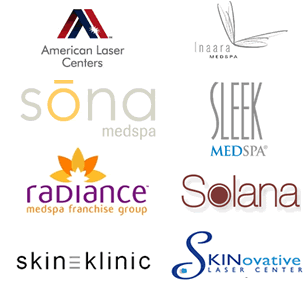How to become a Heroic Physician in the eyes of your patients.
/ Ready to add more to your bottom line from word of mouth patient referrals?
Ready to add more to your bottom line from word of mouth patient referrals?
What you need is a hero.
You likely already know that effective marketing is not about blatant self-promotion. (If you don't, well, you should.) Your focus should be building your authority and credibility that provides true value to your patients. Over the long term, this snowball building strategy will easily convert a good percentage of your patients into active zealots (patients who actively promote your practice).
It's medical practices with an active zelot-building strategy that are healthy, growing, and profitable.
But there's a catch. (There's always a catch.)
The only really effective way to build this kind of proactive patient population is not through a frontal assault, but with a carefully organized strategy of soft, outside promotion.
Is it ever okay to do some “hard selling”? Absolutely, but your best bet is to do it in a way that doesn't come across as selling. The good news is that the technique you can use is one of the most potent forms of selling around.
Confused? Let’s take a closer look at the bad, better and best approaches.
Bad: Blatant Self-Promotion
See: Physicians get the consultants they deserve. Marketing that focuses on telling people how wonderful you are is bound to be a flop. If it comes across as self aggrandizement, you're shooting yourself in the foot. No one wants to go in and have a consultation of buy something who thinks he's God's gift to mankind. (Note: If you think that you might actually be Gods gift to mankind, there's no need to continue reading this since it obviously won't help.)
All great marketing focuses on the prospect, and all great medical marketing focuses on the patient. You’re wasting your time telling people how great you are, because odds are no one will care enough to decide whether to believe you.
Better: Customer Testimonials and Media Blurbs
As I’ve said a couple times before, what other people say about you is more important than what you say about yourself. This is the foundational aspect of testimonials and third party endorsements. Board certification is a perfect example of this. Plastic surgeons show that they're board certified so that patients will feel a sense of security knowing that this third party has said that this doctor isn't a complete sham.
Testimonials and media mentions are important because of the concept of social proof. We all, to vary degrees, look to others for indications of what to do and how to behave. Social proof is the basis of buzz, word-of-mouth marketing and fashion trends, but it’s also an important aspect of our day-to-day lives. We avoid sensory and information overload by looking to social indicators for judgmental heuristics that help us make decisions.
When patients pull up to your clinic, they don't want to see you driving up and getting out of a beat up VW bug. The fact that you have a BMW, Rolex, a good haircut, and staff wearing jackets with their name are all forms of social proof that show that you've got money because a whole bunch of other patients choose you. So, a patient can fee that they're not stupid choosing a doc who so many others have chosen before.
However, outside of a focused attempt to get someone to take immediate action (like order a product or call you), testimonials are not very compelling. Simply regurgitating what someone has said about you is not nearly as interesting as it is when it’s read somewhere else. In short, testimonials do not make 'great' sales fodder.
Can we do better?
Best: Hero Stories
What’s a hero story?
A hero story is similar to a testimonial, except that it transcends praise and becomes a compelling, engaging narrative that your patients can directly relate to. Instead of you or your business being the center of attention, your patient or client is the “hero” who solves a problem utilizing your solution. Bingo.
Here are some key characteristics of the hero story:
- The story is not about you or your company
- The story is about your customer and how they solved their problem
- First, introduce the hero
- Next, introduce the problem
- How did the hero solve the problem?
- What did the hero learn along the way?
- What specific results did the hero achieve?
Woven into the story, of course, is you and your solution. But you’re really just an “extra” who supports the hero. You want the hero to speak to your readers and prospective customers in terms they can relate to. Or in other words, a hero makes you look good in ways that are difficult for you to achieve yourself. People will tune out your own horn-blowing, but they’ll love a good story with a protagonist who conquers challenges that are similar to their own.
A Hero Story is Simply a Good Story
The key, of course, is a good story, and a good hero story is just like any good story—it contains drama, obstacles, conflict and resolution. And the key to writing a good hero story is to be engaging in your presentation.
I could use multiple examples but I'll relate one that I've coached some of our physicians to use during consultation training.
We have a before and after picture of a patient we treated who had with a large port wine stain along the right side of her face. The mark, the size of an outstretched hand, covered her from above her hairline, over her ear, down her cheek and neck and to her clavicle. Since she was born, this huge and obvious mark had ruled her interactions with people. Her teen and dating years were marked by peril at what boys and others might think or say.
As a result, she always wore turtlenecks and covered her mark with hairstyle and makeup. It was an onerous, deeply threatening condition that in many ways ruled her life. At her wedding she had had no photographer and had forbidden pictures to be taken.
She became a Surface patient shortly after she was married. During her lifetime there had never been a technology that could treat her condition and when we came on the scene, one of our other patients who was a close friend, recommended that she come in for a consult.
It took six treatments, but we were able to remove the entire mark to a level that you would never be able to tell that a port wine stain had ever existed. For her, it was a miracle.
For the first time in her life, she dropped the turtlenecks and wore her hair back. In fact, she went further and assembled her entire wedding party and had her wedding pictures taken in her wedding gown. It took her six months to adjust to the new way that people speaking to her looked at her eyes and didn't constantly look at her mark. She loved it.
We were happy to be a part of it.
Heroes? Sometimes.

















